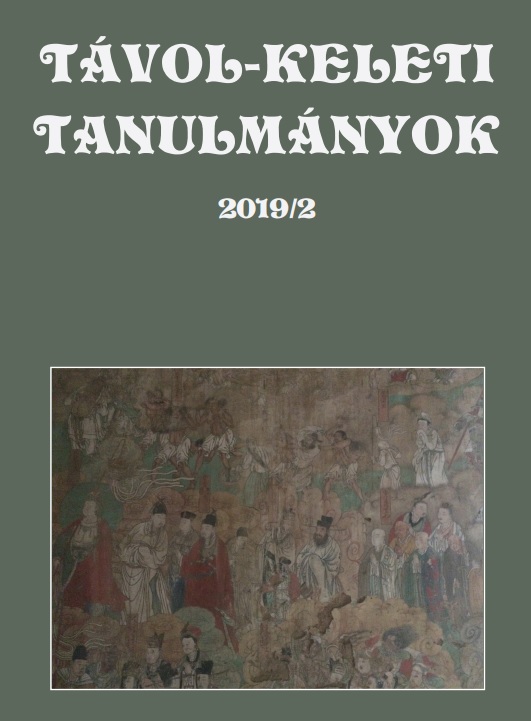Szervezeti relációk a japán ipari vállalkozási kultúrában: A szégyen és bűntudat kultúrája: szervezeti normák és funkcióik
Megjelent 2020-10-30
Kulcsszavak
- individualizmus,
- kollektivizmus,
- ingroup,
- outgroup,
- konformitás
- tatemae,
- honne ...Tovább
Hogyan kell idézni
Copyright (c) 2020 a szerző(k)

This work is licensed under a Creative Commons Attribution-NonCommercial 4.0 International License.
Absztrakt
The present article develops a practical operational view of Ruth Benedict’s shame and guilt culture concept as one of the attributes which might characterize the structure and operation of Japanese social groups. After giving a short overview of critical approaches to this concept, several norm-forming, normoperating and sanctioning practices are examined in relation to the aspect of shame and guilt reactions from the everyday lives of intercultural industrial organizations (companies) located in Hungary, featuring Japanese company cultural elements in their operation. The evaluation and analysis of several related phenomena are conducted on the basis of fieldwork, involving further sociological concepts such as relational subjectivism, kanjin 閑人, shikaku 資格 and ba 場, chū 忠 and kō 孝, giri 義理 and ninjō 人情, wa 和, amae 甘えand others.
Hivatkozások
- Benedict, Ruth 1989. The Chrysanthemum and the Sword: Patterns of Japanese Culture. Boston: Houghton Mifflin.
- Benedict, Ruth 2016. Krizantém és kard. Budapest: Nyitott Könyvműhely.
- Doi, Takeo 2014. The Anatomy of Dependence. New York: Kodansha USA Inc.
- Hamaguchi, Eshun 1997. “A Methodological Basis for Japanese Studies – with Regard to Relatum as its Foundation.” Japan Review 9: 41–63.
- Hamaguchi Eshun 1996. Nihon bunka wa ishitsu ka. 日本の文化は異質か. [Más-e a japán kultúra]. Tōkyō: Nihon Hōsō Shuppan Gaisha.
- Hendry, Joy 1995. Understanding Japanese Society. London: Biddles Ltd., Guilford and King’s Lynn.
- Hungarian Courts. Statistical Data of Labour Law Cases in Hungary. https://munkaugyilevelek.hu/1998/03/perben-haragban/ (2019.03.10)
- Japanese Courts. Statistical Data of Labour Law Cases in Japan. www.courts.go.jp/vcms _lf/20505109.pdf#search='労務関係訴訟件数と内容+統計' (2019.03.10.)
- Kato, Ryoko 1988. “National Character Studies of Japanese.” Mid-American Review of Sociology 13/1: 69–78. https://doi.org/10.17161/STR.1808.5026
- Kent Pauline 1989. „Tsumi no bunka to haji no bunka saikō. Bunka taishō to bunka hikaku”. 罪の文化と恥の文化再考: 文化対照と文化比較. [A szégyen kultúrájának és a bűn kultúrájának újragondolása. A kultúrák kontrasztba állítása és összehasonlítása.] Faculty of Human Sciences, Osaka University – Annuals of Human Sciences 10: 71–87.
- Kent, Pauline 1996. „Misconceived Configurations of Ruth Benedict.” Review 7: 33–60.
- Lanhem, Betty B. 1986. „Ethics and moral precepts taught in schools of Japan and the United States.” In: Lebra, Takie Sugiyama, Lebra, P. William (eds.): Japanese Culture and behavior. Selected readings, Honolulu: University of Hawaii Press, 280 ̶ 296.
- Lebra, Sugiyama, Takie 1976. Japanese patterns of behaviour. University of Hawai’I Press, Honolulu.
- Nakane Chie 1972. Tekiōno jōken. Nihonteki renzoku no shikō. 適応の条件. 日本的連続の思考. [Az alkalmazkodás feltétele. A japán típusú kontinuitás.] Tōkyō: Kōdansha gendai shinsho.
- Nakane, Chie 1973. Japanese Society. Harmondsworth: Pinguin book.
- Nakane Chie 1981. Tateshakai no ningenkankei タテ社会の人間関係. [Emberi kapcsolatok a vertikális társadalomban.] Tōkyō: Kōdansha.
- Papp, Melinda 2016. Shichigosan. Change and Continuity of a Family Ritual in Contemporary Urban Japan. New York: Palgrave Macmillan.
- Sakuta, Keiichi, Kimiko Yagi., Meredith McKinney. 1986. A Reconsideration of the Culture of Shame. Review of Japanese Culture and Society 1/1: 32–39.
- Sugimoto Yoshio 2010. An introduction to the Japanese Society. Cambridge: Cambridge University Press.

